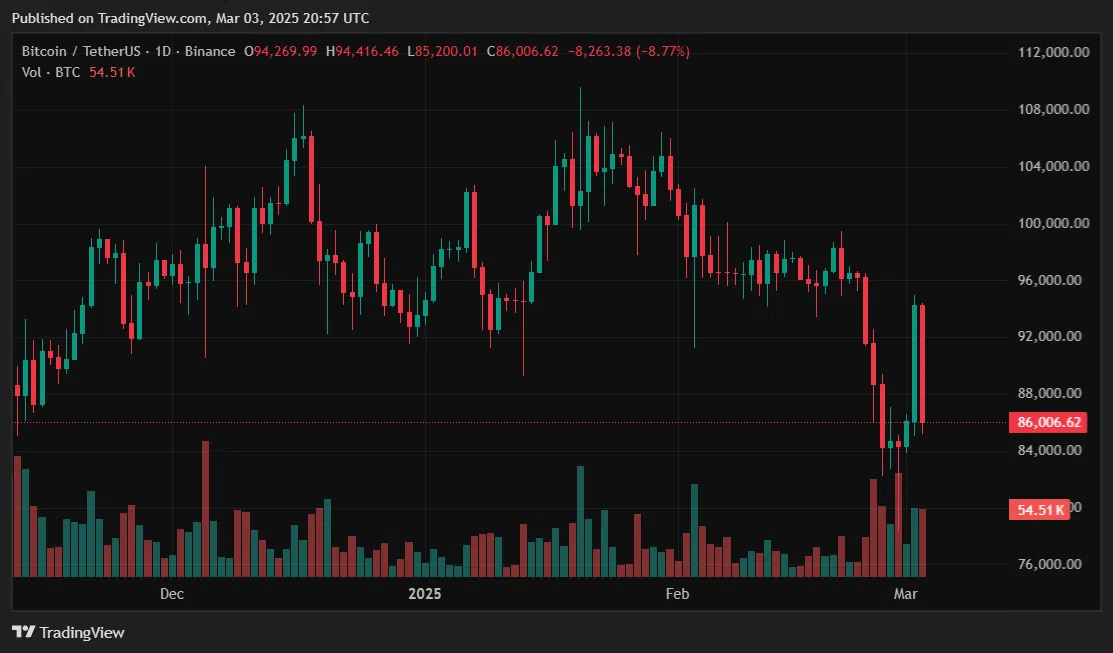3 min read
TAKE A BREAK
Bitcoin Falls to $85K as Crypto Market Rally Reverses
Updated: 3/4/2025
Crypto Market Faces Sudden Reversal
Over the weekend, Bitcoin and other digital assets saw a massive $330 billion inflow following President Donald Trump’s announcement of a potential national crypto reserve. This led to one of the strongest daily market increases in recent history.
However, by Monday, March 3, the market had reversed course. The total crypto market capitalization dropped over 10%, falling from $3.2 trillion to $2.9 trillion. Bitcoin declined 8%, slipping below $85,500, erasing all of its Trump-related weekend gains.
Altcoins and Stocks Take a Hit

The downturn wasn’t limited to Bitcoin. Major altcoins posted significant losses:
- Ethereum (ETH): Down 14.84%
- XRP: Down 17.81%
- Solana (SOL): Down 19.42%
- Cardano (ADA): Down 25.41%
Traditional markets also felt the impact. President Trump’s renewed tariffs on Canada and Mexico, set to take effect on March 4, rattled investors. The stock market responded with sharp declines:
- Dow Jones: -1.48%
- S&P 500: -1.76%
- Nasdaq: -2.64%
Crypto-related stocks faced even steeper losses. Coinbase (COIN) fell 4.58%, Robinhood (HOOD) dropped 6.41%, while MicroStrategy (MSTR) fared slightly better, declining 1.77%.
Mass Liquidations and Market Uncertainty
The market correction triggered a wave of liquidations. Data from CoinGlass shows that crypto liquidations surpassed $800 million in the past 24 hours, nearing the $1 billion mark.
Additionally, analysts previously predicted Bitcoin could fall below $86,000 due to gaps in CME BTC futures. This gap has now been closed, according to TradingView data, signaling a potential stabilization in the near term.
What’s Next for Bitcoin and the Crypto Market?
Despite the pullback, market analysts remain cautiously optimistic. Some see this as a healthy correction following a speculative surge, while others warn of continued volatility as regulatory and macroeconomic factors unfold.
As investors assess the impact of the U.S. crypto reserve plans and global economic policies, the coming weeks could determine whether Bitcoin can regain momentum or if further declines are ahead.